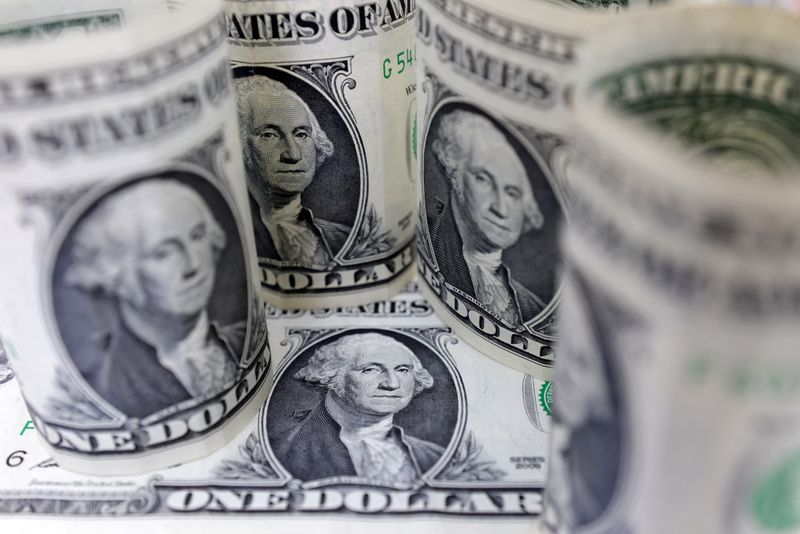Dollar dips as US voters head to polls
By Karen Brettell and Amanda Cooper
(Reuters) - The U.S. dollar fell as U.S. voters headed to the polls on Tuesday, with the results of the elections likely to decide at least the near-term fate of the greenback.
Polls show a tight race between Republican former president Donald Trump and Democrat Vice President Kamala Harris and the most extreme currency moves will occur if the party of the new president also wins control of Congress.
Traders have pared back bets that Trump will win the presidency in recent days, in part due to some polls showing rising odds of a Harris victory. Election betting sites including PredictIt and Polymarket show Trump as the favorite though his probability of victory has declined.
“We've seen a little bit of the dialing back of that so-called Trump trade, which is strong dollar, high Treasury yields,” said Helen Given, FX trader at Monex USA in Washington, DC.
“We're going to see the dollar stick pretty close to current ranges, I'd say within a quarter of a percent or so, until we start seeing trickles of results tonight,” Given said.
Analysts expect Trump’s policies on immigration and tariffs to stoke inflation, while tax cuts and deregulation may boost growth, sending longer-dated Treasury yields and the dollar higher.
A Democrat sweep, conversely, could send the dollar lower as traders unwind more bets on Trump and on possible investor concern about the economic impact of higher taxes and more stringent business regulations.
‘Trump trades’ have helped to propel the dollar higher in recent weeks and caused weakness in the euro, Mexican peso and Chinese yuan , with those regions all potentially facing new tariffs under a Trump presidency.
Volatility in these currency pairs has also surged as the election approaches.
The one-week implied volatility for euro/dollar options was the highest since March 2023.
Implied volatility for China's offshore yuan is at a record high, while that for dollar/Mexican peso is at the highest since March 2020.
The dollar index was last down 0.32% at 103.60. The euro gained 0.29% to $1.0908. The greenback dipped 0.19% to 151.84 Japanese yen.
The Chinese yuan gained 0.11% in offshore trading to 7.105 per dollar while the Mexican peso weakened 0.09% to 20.133.
Bitcoin gained 4.03% to $69,767. Trump has expressed views that are seen as more favorable for cryptocurrencies.
Traders are also focused on the Federal Reserve’s two-day meeting due to conclude on Thursday, when the U.S. central bank is expected to cut rates by 25 basis points. Investors will focus on any clues over whether the Fed could skip a cut in December.
A much stronger than expected jobs report for September led investors to pare back expectations on how many times the Fed is likely to cut rates. A much worse than anticipated report for October, however, has raised some doubts over this view.
“I'm sure that they've been looking at those data points and that absolutely abysmal headline number, so maybe they see something in it that markets don't and we might get some clues for them on what we're looking at in December,” said Given.
Recent hurricanes and labor strikes were partially responsible for October's weak report.
Traders are now pricing 80% odds the Fed will also cut in December, according to the CME Group’s Fed Watch Tool.
The Bank of England is expected to cut rates by 25 basis points on Thursday, while the Riksbank is seen easing by 50 basis points and the Norges Bank is expected to stay on hold.
Sterling strengthened 0.46% to $1.3016.
Australia's central bank held interest rates steady on Tuesday, as expected, and cautioned that policy would need to stay restrictive for some time yet.
The Australian dollar rose 0.76% to $0.6634.
Source: Investing.com
